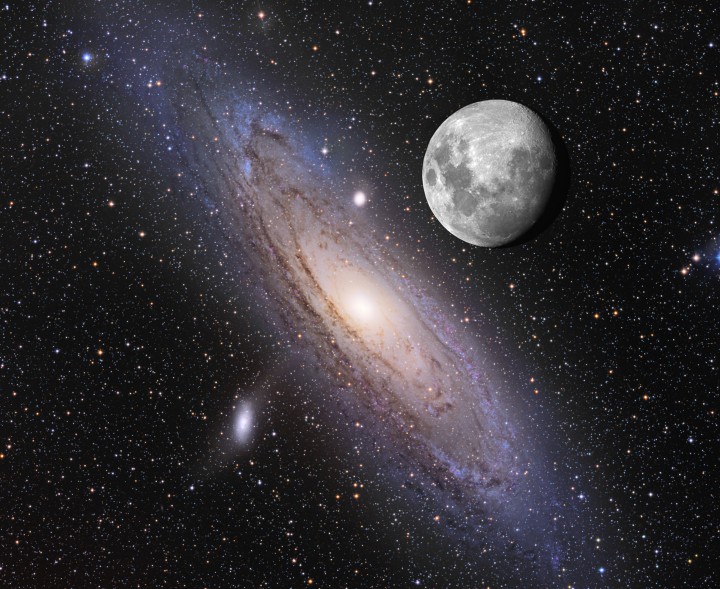
|
Credit & Copyright: Adam Block and
Tim Puckett
Explanation:
The Great Spiral Galaxy
in Andromeda (aka M31), a mere 2.5 million
light-years distant,
is the closest
large spiral to our own Milky Way.
Andromeda is visible to the unaided eye as a small, faint, fuzzy patch,
but because its surface brightness is so low, casual
skygazers can't
appreciate the galaxy's impressive extent in planet Earth's sky.
This entertaining composite image compares the
angular size
of the nearby galaxy
to a brighter, more familiar celestial sight.
In it, a
deep
exposure of Andromeda, tracing beautiful blue star
clusters in spiral arms far beyond the bright yellow core,
is combined with a typical view of a nearly full Moon.
Shown at the same angular scale, the Moon covers about 1/2 degree on the
sky, while the galaxy is clearly several times that size.
The deep Andromeda exposure also includes two bright satellite
galaxies, M32 and
M110 (bottom).
|
January February March April May June July August September October November December |
| ||||||||||||||||||||||||||||||||||||||||||||||||
NASA Web Site Statements, Warnings, and Disclaimers
NASA Official: Jay Norris. Specific rights apply.
A service of: LHEA at NASA / GSFC
& Michigan Tech. U.
Based on Astronomy Picture
Of the Day
Publications with keywords: Andromeda galaxy - Moon
Publications with words: Andromeda galaxy - Moon
See also:
